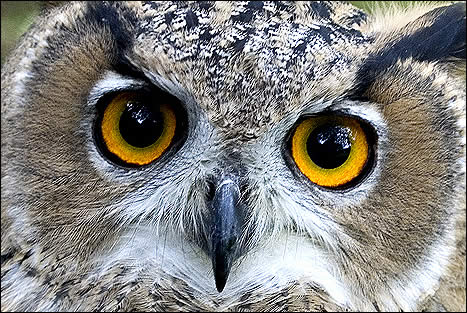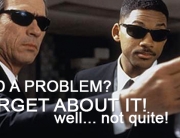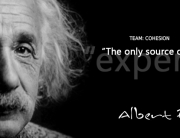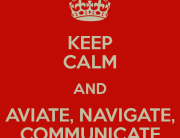The view outside the windshield gave the impression of a black abyss. It was late at night – close to 1am body time. The North Atlantic was keeping its secrets shrouded in the dark of the night, so they passed time talking of small things and trying to stay awake. The A330’s cockpit was comfortable at least, and their destination was forecasting very welcoming weather.
Almost halfway across the ocean, however, the idyllic flight took a turn in a dramatic direction. Flashing harshly in the dim light of the cockpit, their computer’s screen indicated some troubling news: a fuel imbalance one the #2 engine side had raised a flag. The captain, a 48 year old veteran pilot with countless hours under his belt, stared at the screen quizzically. Such a heavy imbalance could be the symptoms of a fuel leak, but he was fairly certain that the last few routine checks had not indicated such a problem or they would have caught it earlier. Those airplanes were so new and technology-dependent, he really did not trust the computer. Anyway, if the computer was so smart, it should be able to tell them about a simple fuel leak. It had to be a glitch.
The first officer, a much younger pilot of 28 years old, thought otherwise. Technology was part of his life, and he understood it well. He could almost communicate with machines. But today he was not running the show. After discussing and debating, the crew opted to start transferring fuel from one wing to another in order to try and “fix” the computer.
But something was not right. Now both tanks were losing fuel at a much higher rate than the engines’ consumption was indicating. Despite the computer’s dire predictions, the captain was convinced that it was only a “glitch” and the fuel tanks were well and full. The young first officer, sensing a rapidly approaching disaster, had to do something. But how could he communicate properly to his captain? Almost a lifetime of experience separated them, and a much different approach to technology and its usefulness. He had to get through to the captain, and make him understand how dire the situation was, get him to divert. And soon!
Finally changing course despite the captain’s doubts, the flight headed towards a group of island along their way to Portugal. Minutes later, the #2 engine flamed out from fuel starvation, followed by #1 when all their fuel had bled dry. Thankfully, the FO’s persistent efforts to communicate how perilous their situation paid off. Their timely diversion had put them in gliding range of the Azores, where the crew of Air Transat Flight 236 (1) safely landed after gliding their A330 almost 20 minutes, crossing 65 NM completely unpowered.
Communication is a broad skill. The Flight Safety Foundation(2) defines it as “the capabilities and limitations in transmitting information (speaking) and in receiving information (listening) using unambiguous (standard) phraseology to coordinate flight-deck activity and divide task loading, and to interpret correctly and act on information essential for task performance”.
“One in four persons you meet will not get along well with you,” my coworker told me one day. Really? I get along well with everybody! Mostly. “But,” he added “I don’t know why. I just heard it and thought it was an interesting statistics.” Wait, you mean one out of four pilots I work with will cause me grief in the cockpit?
The reality is, I knew exactly what he meant. Human communication hinges on many variables, and the Liveware-Liveware link in the SHELL model highlights a very egregious part of the human factor which too often leads to incidents or accidents. Interpersonal styles, an individual’s background, or even external influences can create barriers to clear communication. In Air Transat Flight 236’s story, the junior first officer had to communicate with a much senior and, in reality, a much more experienced captain. He probably felt intimidated. Did that hinder their CRM and communication? A major communication error is represented in the “failure to respond to, or act on, a warning from another crew member.”(2)
Did you know that, on average, verbal communication is only 30% effective? However – and thankfully – many tools are readily available today to help enhance our communication skills.
Imagine the one guy you really don’t like seeing on the same line of the schedule. Maybe it is that he just talks and talks and by gosh you wish he’d get to the point sometimes and for once stop mentioning the POH! Or maybe he is just a bit rude and always has to be right. It could even just be that you can’t stand their constant excited, “up-and-down” emotional roller-coaster. Or maybe he or she is just too nice and never has an opinion!
Any of these sound familiar? I’m guessing the answer is probably yes, in some way or form.
We all have our own experiences. They make us unique. Because of that, communicating with each other becomes a daily challenge. Shared experiences or training certainly make it easier. As professionals, where do we begin, what base can we use to build our communications skills on?
Pilots love rules of thumb. They make things easier to remember, and often time save us a lot of hassle trying to figure out some otherwise complicated equations. A great rule of thumb I found useful when studying communication is the four communication styles.
Joe Sharren (3) – a world leader in this subject – called them the four birds – Eagles, Owls, Doves and Peacocks. Each bird has a distinctive way to relate, to communicate. Although I’ve used the bird reference, these communications styles have been given many other names by other experts.
Understanding the Four Communication Styles
Another common name for it is the DISC method – Drivers, Influencers, Steadys, Compliants. Let’s have a look at what they are and how knowing them can help you enhance your crew communication in the cockpit.
Driver (or Eagle)
The Eagle is easy to spot because they just want to get the job done. Get to the point, get results. Because of this, they can be perceived as bossy and insensitive. Extremely goal oriented, their major motivation is to get things done. They are also driven by recognition, and significance
The Eagle paints with a broad brush and has little use for details, so when communicating with an Eagle, keep the verbal communication short and don’t give them any more details than are absolutely necessary to get your point across. They don’t like to acquire information. When information is needed, keep your verbal explanation short, then provide a detailed explanation through a nonverbal medium (email, paper, memo, etc.).
Their facial features are usually sharp, and they like to dress and maintain a ‘clean cut’ appearance. Eagles are comfortable in an environment that includes power and authority, freedom from supervision and working with a variety of activities. They also have trouble identifying with the team, and lack understand of how powerful people working together can be.
The Influencer (or Peacock)
You know the Peacock…they’re the life of the party and lots of fun. They love people and love to talk. Their natural sociability allows them to talk for long periods of time about almost anything. They have an attractive personality, are enthusiastic, curious, and expressive. Beware though, as they harbor the most volatile personality. Always interested in making a favorable impression on friends, coworkers and clients – their biggest fear and anger trigger is to lose face.
Peacocks are outgoing, exuberant and innovative. Outgoing and creative personalities have a difficult time doing bland tasks whether they are verbally or nonverbally communicated. Use a lot of examples, demonstrations and visual aids to effectively communicate with creative personalities. A creative mind will remember information by association.
Since they always see the best in people, Peacocks can have trouble making objective evaluations of people and situations. They don’t like a lot of details and can appear a little disorganized. But we all benefit from people like them, who encourage us to open up and communicate. A Peacock contributes to a creative, outgoing and positive working environment.
The Steady (or Dove)
The person with a Dove communication style typically has a low key personality and is calm, cool and collected. They tend to be patient, well balanced and happily reconciled with life. Doves are the largest percentage of the population and they are typically competent and steady workers who do not like to be involved in conflict. When there is conflict they may be called upon to mediate the problem. They are good listeners and usually have many friends. One of their major motivations is to avoid offending anyone.
Doves facial features are usually soft, and they like to dress in whatever way is the most comfortable for them. Usually quiet, they are also extremely good listeners, thus sometimes providing some great ideas – but never wanting to make a decision.
Gentle, patient, understanding – they are part of the glue that keeps a team working together.
The Compliant (or Owl)
An Owl’s life is made of facts. They love to gather details and organize things. Because their communication style includes a need for details, they sometimes hesitate to make decisions if they feel that they don’t have enough facts. They love lists, charts, graphs and figures. They also have a habit of pointing out everything that can go wrong – but it’s good to have Owls because they can see potential problems. An Owl needs to work with people who can help him or her see the big picture. A funny fact about owls – even while engaged in a simple thought process, they can appear to be ‘mad’ as their faces become stern. Don’t worry, they are not mad at you – but simply thinking hard.
Owls like to finish everything they start. Their daily routine rarely changes; in fact, an Owl doesn’t handle sudden changes well at all. But their love of routine can slow things down in an environment that requires quick decisions and action – an airplane cockpit being one of them.
Very diplomatic with people, they use a critical approach to analyzing performance and don’t take criticism personally. Sit down with a person who is detail-oriented and spend time verbally going over every task, expectation and purpose. Allow for questions between each instruction because detail-oriented personality types will typically ask a lot of questions to ensure they accurately understand what is being communicated.
Qualities and Characteristics of each Birds
How do you relate to your fellow birds, while caged in the same cockpit for a day or more? The model’s rule of thumb indicates that we most often have a Primary and Secondary communication style.
By understanding the basic differences and how to relate to your fellow pilot, you will be able to avoid a tremendous amount of conflict simply linked to misunderstandings and communications barriers.
Although emotional intelligence might be called the “foundation” of any team or individual – communication is an essential part in the potential for success or failure. For a team or individual to achieve their goal, interaction will always be present. Be it in communicating with team members or stakeholders, a skilled person will remove the risk for misunderstanding of goals or needs, thus reducing the margin of error which could introduce safety problems or the inability to complete the mission down the line.
Pilots are often entrusted with a leadership role – but the responsibility is not theirs alone. Cabin crew and support personnel also hold an irrevocable place in the team leadership and provide key skills for success. Clear and effective communication between all the groups and within each sub-group must then be amongst the top priority and skill-set of each TEAM member.
| FACTS | PEACOCK | EAGLE | DOVE | OWL |
| How to Recognize: | Get excited | Like their own way; decisive & strong viewpoint | Like positive attention, Need be helpful & regarded warmly | Want a lot of data, ask many questions. Methodical & systematic |
| Tends to Ask | Who? (the personal dominant question) | What? (the results oriented question.) | Why? (the personal non-goal question.) | How? (the technical analytical question.) |
| What They Dislike: | Boring explanation. Wasting time with too many facts. | Wasting time debating rather than acting | Rejection, impersonal treatement, uncaring attitudes. | Making an error, being unprepared, spontaneity. |
| Reacts to Pressure and Tension By: | “Selling” their ideas, arguments. | Taking charge taking more control. | Becoming silent, withdraws, introspect-tive. | Seeking more data & information. |
| Best way to Deal With: | Get excited with them. Show emotion. | Let them be in charge. | Be supportive; show you care. | Provide lots of data & information. |
| Likes To Be Measured By: | Applause, feedback, recognition | Results, Goal-oriented. | Friends, close relationships. | Activity & busyness that leads to results. |
| Must Be Allowed To: | Get ahead quickly. Likes challenges. | Get into a competitive situation. Likes to win. | Relax, feel, care, know you care. | make decisions at own pace, not cornered or pressured. |
| Will Improve With: | Recognition & some structure with which to reach the goal. | A position that requires cooperation with others. | A structure of goals & methods for achieving each goal. | Inter-personal and communi-cation skills. |
| Likes to Save: | Face. They will do or say anything to come out looking good. | Time. They like to be efficient, get things done now. | Relationship & Friendship means a lot to them. | Mistakes. They hate to make an error, be wrong or get caught without enough info. |
| For Best Results: | Inspire them to bigger & better accomplishments. | Allow them freedom to do things their own way. | Care & provide detail, specific plans to be completed. | Structure a framework or “track” to follow. |
- Ladkin P.B. (2004). Air Transat Flight 236: The Azores Glider. Germany: RVS Group, University of Bielefeld, 2004. Retrieved from http://www.rvs.uni-bielefeld.de April 2014
- Anthony P. Ciavarelli, Ed.D. (2001). Flight Safety Digest: Human Factors Checlist Provides Tool for Accident/Incident Investigation. US: Flight Safety Foundation, 2001.
- Sharren J. The Birds. Retrieved from www.ethos.ca, April 2014
Additional Reading:
4 Communications Styles
(http://www.maximumadvantage.com/four-styles-of-communication.html)
Effective Communication With Different Personality Types | eHow.com
(http://www.ehow.com/way_5587639_effective-communication-different-personality-types.html#ixzz2FoWkE0UH)
Communicating your story
(http://www.entrequest.com/communicating-your-story-to-the-four-personality-types/)






























[…] Preflight -TEAM Assessment (EiQ; understanding your team’s strenghts & limits) -TEAM Communication (Communications styles) -TEAM Work (How your team’s training will affect the success and safety of your […]
[…] Preflight -TEAM Assessment (EiQ; understanding your team’s strenghts & limits) -TEAM Communication (Communications styles) -TEAM Work (How your team’s training will affect the success and safety of your […]
[…] allowing the crew to instead concentrate on the issues being discussed. Remember, we are all Birds of a Feather (Chapter 3, TEAM Communication). But which bird are you? If you haven’t done so yet, I invite […]
[…] allowing the crew to instead concentrate on the issues being discussed. Remember, we are all Birds of a Feather (Chapter 3, TEAM Communication). But which bird are you? If you haven’t done so yet, I invite […]
[…] Preflight -TEAM Assessment (EiQ; understanding your team’s strenghts & limits) -TEAM Communication (Communications styles) -TEAM Work (How your team’s training will affect the success and safety of your […]
[…] Preflight -TEAM Assessment (EiQ; understanding your team’s strenghts & limits) -TEAM Communication (Communications styles) -TEAM Work (How your team’s training will affect the success and safety of your […]
[…] Understand your team (Assessment, Communication) […]
[…] Understand your team (Assessment, Communication) […]
Just got my final book in the mail! Thank you. Love it!!!
You are so welcome Karlene! Thanks for all the help you’ve poured into it!